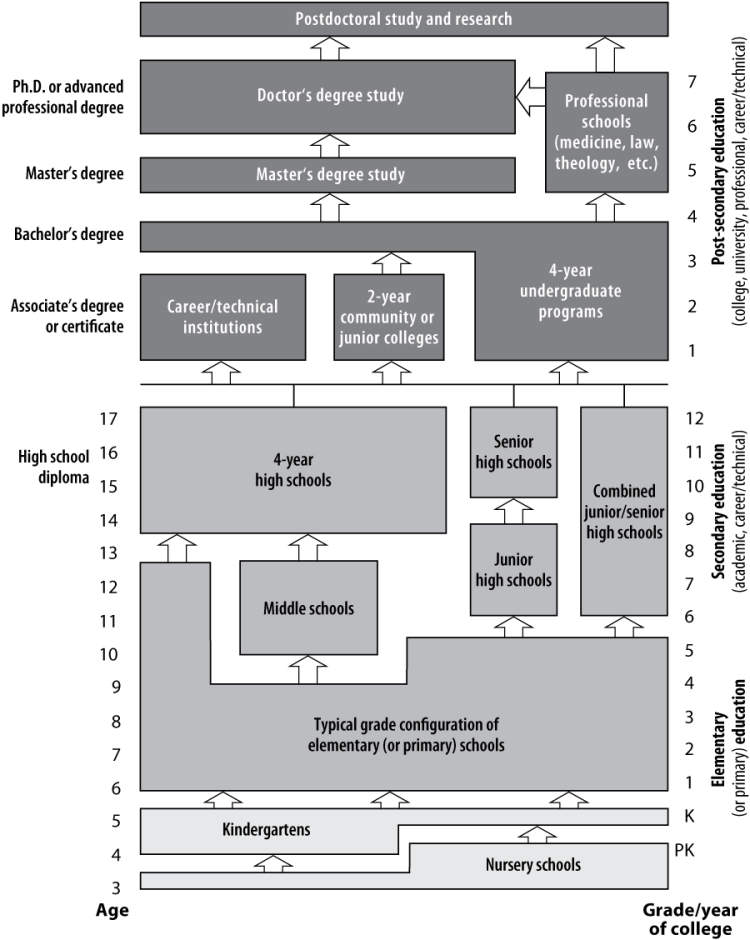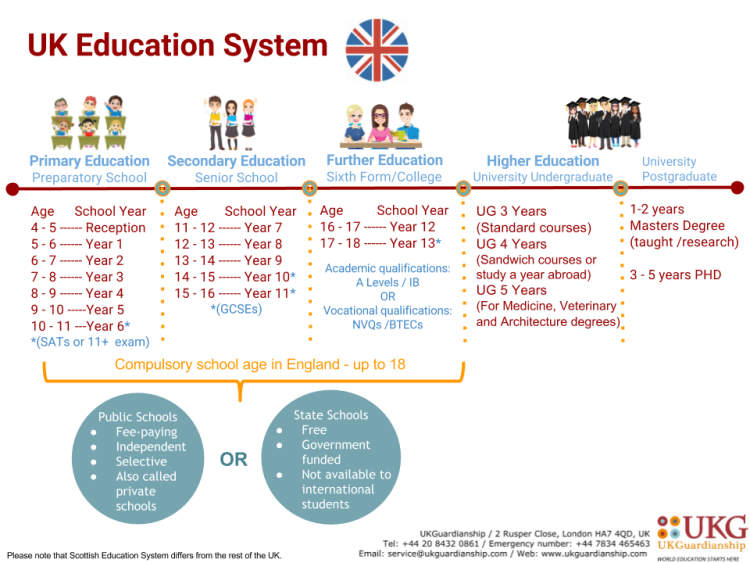The United States has one of the most sophisticated and complex educational systems in the world. A comprehensive overview of the US education system is essential for those who wish to understand how education is funded and regulated in this country.
Providing education in the US has traditionally been managed at the state level. Laws governing public schools, private schools, home schools, and higher education institutions vary from state to state. It is essential to understand the role of each level in providing the collective resources of the US education system so that all students have access to learning opportunities.
Overview of the US Education System
The United States has a decentralized education system, meaning that each state, district or even individual school may have different educational approaches. Generally, the American education system is divided into three categories: primary, secondary and postsecondary. Within each category, there are variations to suit a student’s particular needs and goals.
Primary education in the US consists mainly of kindergarten through fifth grade, although some states start as early as pre-kindergarten. During this time, the focus is on basic literacy and numeracy skills. Subjects such as science, social studies, and physical education are also taught. In addition, youngsters learn the rules of the school environment.
Secondary education is divided into two main parts: middle school and high school. Middle school, usually for grades six through eight, focuses on further developing a student’s basic literacy and numeracy skills. High school, for grades nine through twelve, helps students become more academically and emotionally prepared for college and career. Subjects such as math, science, history, and English become more specialized.
Postsecondary education consists of colleges and universities. These can range from two-year vocational schools to four-year research universities. Here, the main focus is on advanced learning in a particular field of study. Students are encouraged to take internships, participate in research opportunities, and network with professionals in their chosen field.
Structure of the US Education System

The US education system comprises primary and secondary schools, colleges and universities, and professional schools. Each of these education institutions is subject to laws and regulations set by the federal, state, and local government for quality assurance. Several agencies and organizations are also involved in managing, evaluating, and accrediting the educational system.
Primary education consists of grades 1-7, while secondary education consists of grades 8-12. It is compulsory for children to attend primary school before they go to secondary school. However, some states may require that students pass an assessment or other criteria before they can be admitted to secondary school.
At the college level, undergraduate degrees are typically three or four years in length. During this period, students can specialize in a major, minor, or focus on developing their skills in a particular field. Most universities also offer master’s and doctoral degrees, which require students to complete additional years of in-depth study.
Apart from traditional universities, higher education can be completed online or at community colleges. Community colleges offer two-year associate degrees or technical certifications, while online degrees provide flexibility for students who wish to pursue a degree from home.
Professional schools offer specialized study programs for those who want to become lawyers, doctors, nurses, and other professionals. To gain an advantage in the career field, students have to complete a rigorous training at professional schools, which include taking exams and completing specific course requirements.
The US education system is comprehensive and well-regulated to ensure that students receive a quality education. By embracing various forms of education, the US makes it possible for everyone to gain the knowledge and skills they need for success.
Components of the US Education System
The US education system has evolved over time to become one of the most comprehensive in the world, comprising of different components that work together to support and empower students. These components include the following:
- State Departments of Education
- Public School Districts
- Public Schools
- Nonprofit Organizations
- Educational Professional Organizations & Institutions
- Private Schools
- Home Schools
- Board of Education
- Universities
State departments of education are responsible for setting and implementing education policy at the state level. Public school districts are created to deliver educational services in geographic areas. They are responsible for overseeing the operation of public schools in their jurisdiction, providing professional support, and distributing funding. Public schools are the primary source of education for students in the US and can either be part of a larger district or independent within a state’s borders. Nonprofit organizations help supplement public schooling by creating or managing resources, such as providing additional tutoring opportunities, after-school activities, and educational grants.
Professionals who work full-time in the education field may become members of educational organizations, like the National Education Association (NEA) or the American Federation of Teachers (AFT), for additional professional support. Educational institutions, such as the National Teachers Academy (NTA), may offer professional development for educators. Private schools are independent schools that are not run by the government. These schools receive funding from tuition fees and usually have a specific focus or mission. Home schooling is when the student’s parents or guardians provide instruction from home. Board of education members are elected to develop and carry out school policies and objectives. Lastly, universities provide college-level courses and are viewed as the stepping stone of advanced education.
Conclusion
The US Education System presents a highly comprehensive framework for ensuring equal access to quality learning opportunities for all members of the student population. Through the use of various federal, state, and local regulations, students in the US are guaranteed to receive a high-quality public education. It is truly encouraging to see the vast resources available to the education sector in the US and the dedication to continuous improvement. From early childhood learning centers to high-level research universities, the US Education System has something to offer to everyone.
A significant amount of time, money, and effort has gone into ensuring that all students, regardless of race, gender, ethnicity, or socio-economic status have access to the best learning opportunities. This applies in the form of support for diverse school programs, volunteer opportunities, and scholarships and financial aid programs. In this way, the US Education System can provide a strong platform for the next generation to reach their highest potential.




